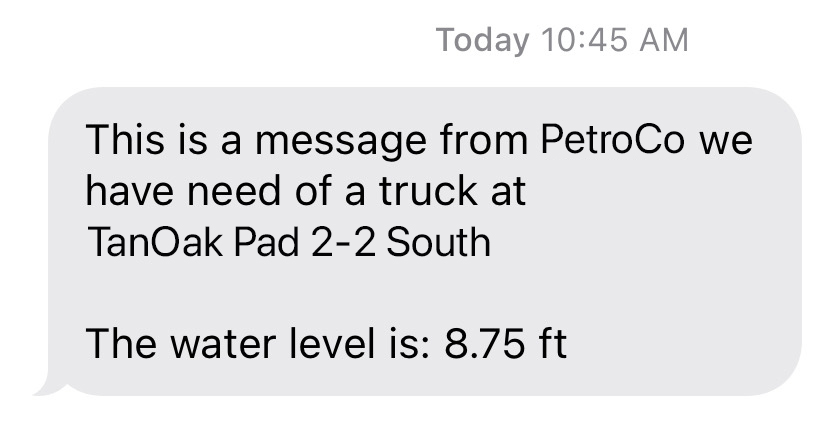OnPing Alarms: Growing with Twilio
We are really very excited to announce the integration of Twilio messaging into OnPing, a major expansion of OnPing alarms. We have had various requests over the years for specialized notifications, push button communications, highly customizable alarming and other applications involving OnPing data and communications with our customers that Twilio has proven to be a very powerful and flexible answer to.
Twilio is a highly customizable communications platform with no code tools to create automated responses to triggers. You can create ‘flows’ that call or text message specific recipients based on external triggers. In the case of OnPing, these triggers are events.

Once a Twilio flow has been created, it can be assigned to an event table in OnPing. When a chosen trigger event occurs, a row is added to the event table and the Twilio flow is triggered, issuing the scripted communication.

This is a simple enough task, whenever an event occurs, a team member is notified. With the OnPing Patform’s other tools like, HMI, SCADA, control and virtual parameters, a huge amount of purpose built OnPing alarms become available.
Control parameters can be created to trigger an event and flow the second a set point is reached. This could be very useful for automating things like dispatch calls to empty full tanks at remote locations or alert maintenance crews to machines reaching higher than normal temperatures or excessive vibrations.
OnPing’s HMI, when used in combination with scripted parameters and event tables, can be employed to add even more convenient functionality. Displays can be easily created to offer easy push button automated communication, a single click to call for a delivery, a pick up or to request assistance from team members or crews. The Twilio flow can automatically pull data from OnPing’s API so your recipient gets all the data they need.

Essentially, Twilio integration combined with other tools in the OnPing Automation Platform can be used to deliver any piece of information available within OnPing to anyone reachable via phone in a variety of ways. It can be set up to be completely automated and hands free, or a manual operation requiring human confirmation. In the usual OnPing fashion, we like to put as many powerful, customizable tools in the hands of our users and find out how they would like them to work for them.
Contact your OnPing customer representative to find out how to set up your custom Twilio Alarming configuration, or visit /docs/creating-twilio-integrations-in-onping/ for a basic how-to.

